A solar-powered lawn mower is a very practical and convenient machine to maintain your lawn at an affordable cost. A lawn or garden is like an ornament for a well-kept house, but an unkempt green patch is sore to beauty-conscious eyes. Hence a solar-powered lawn mower is a must-have for these people because it offers you several advantages. Such as, there is no use of unsafe gas or oil, so it is an environmentally friendly and affordable option. You do not have to commute to the gas station for refills. When it is not in use, plug it up with a lawn mower generator to charge it and then use it as usual.
What is A Solar Powered Lawn Mower
An electric lawn mower using solar power as an energy source is called a solar-powered lawn mower. It offers you much more than a standard internal combustion engine does. Since it uses solar panels to charge it and then it can be used, no costly fuel is involved, nor does it release poisonous fumes.
How Does A Solar-Powered Lawn Mower Work
The basic idea of a solar-powered lawn mower is to convert a traditional machine into a solar machine. So, you will replace the gas engine with an electric motor running on a 12-volt battery. The next step is to charge this battery through a photovoltaic or lawn mower solar power panel.
The working principle of the solar-powered lawn mower shows that it has solar panels mounted in a direction that they receive solar radiation with high intensity easily from the sun. The solar panels then use the photovoltaic effect to convert solar energy into electrical energy.
Solar Powered Lawn Mower VS. Solar Generator for Lawn Mower
Though solar-powered lawn mowers and solar generators for lawns mowers serve the same purpose. The purpose is to run a lawn mower through solar power instead of other consumption-based fuels that are both costly and bad for the environment; some differences exist in their mode of operation.The below diagram shows how a solar generator works.
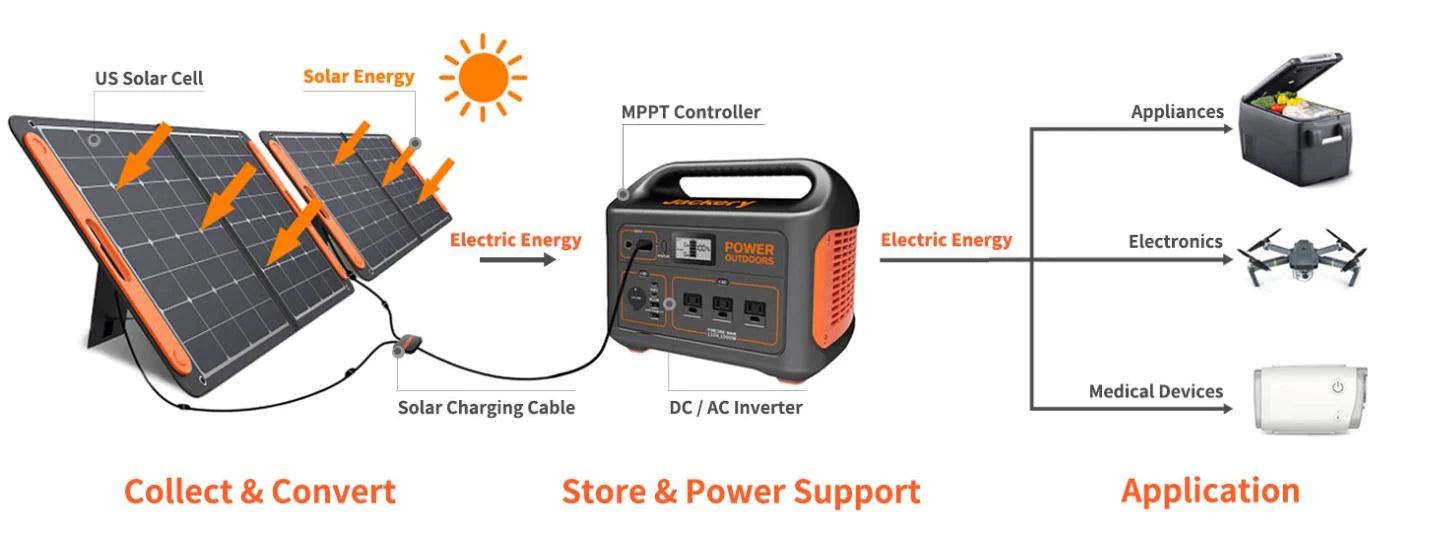
There are some pros and cons to both options. Let us see what a better choice for your situation is.
Pros: Solar Powered Lawn Mower
- Noise-free operation is one of the greatest advantages of a solar-powered lawn mower. Electric mowers generally produce up to 75 decibels, far less than a gasoline mower that is louder by up to 95 decibels.
- Solar-powered lawn mowers have a low to zero fuel cost. With the current soaring fuel prices, it is a big advantage.
- These lawnmowers are very environmentally friendly in various aspects. We have discussed the noise pollution above. Additionally, there are no poisonous fumes in the air and also it is very sustainable.
- Solar-powered lawnmowers are easier to maneuver because they are lighter than gas-powered machines.
Cons: Solar Powered Lawn Mower
- Solar-powered lawn mowers run on batteries have a shorter run time, so if your yard is larger than half an acre, you might have to run it twice.
- Also, solar-powered lawnmowersare not as powerful as gas-powered machines.

Pros: Solar Generator For Lawn Mower
- Solar generator for lawnmowers is a green and low-cost alternative to gas-run machines.
- A 1000-watt solar lawn mower generator can power almost 90% of electrical appliances. So if you purchase one generator, you can use it to run multiple appliances.
- Solar generators are noise-free and low maintenance as compared to gas generators.
Cons: Solar Generator For Lawn Mower
- Solar large-capacity power generators can be expensive.
- They only work at night with backup, and efficiency may be low on cloudy days.
|
Types |
Pros |
Cons |
|
Solar Powered Lawn Mower |
Noise Free |
Shorter run time |
|
Zero Fuel Cost |
||
|
Low Maintenance |
Less powerful |
|
|
Environmentally Friendly |
||
|
Solar Generator for Lawn Mower |
Low cost |
High initial invest |
|
Environment Friendly Can power various devices |
||
|
Low maintenance |
||
|
Can work at night |
How Many Watts Does A Lawn Mower Use
The watt requirement of a lawn mower depends on many factors, including size, maneuverability, motor specifications, etc. Most electric lawnmowers are connected through a cord so that you can use them for a long time without any limitation on runtime and battery. However, this means the lawn mower has limited maneuverability. On the other hand, electric lawnmowers with a rechargeable battery give you maneuverability, but then you have a limited runtime till the battery discharges.
A corded electric mower generally uses 700 to 1800 watts of energy in an hour. Since rechargeable mowers are weaker in power, they use 600 to 1400 watts of electricity, but it also depends on the battery ampere rating and battery size.
How Much Does It Cost to Run A Lawn Mower
How much it costs to run a lawn mower depends on how much power your machine needs and the cost per watt per hour. Considering the current power tariff, your electric lawn mower costs you around 20 to 60 cents per hour. However, the gas lawn mower costs you way more, going up to $7 per hour when using gasoline, and with propane, it averages around $2.50 an hour.
|
Corded Electric Mower Expense
|
Wattage |
Cost per hour |
|
800W |
$0.26 |
|
|
1300W |
$0.43 |
|
|
1800W |
$0.59 |
|
|
Cordless Electric Mower Costs
|
600W |
$0.20 |
|
1000W |
$0.33 |
|
|
1400W |
$0.46 |
How Much Solar Power Does A Lawn Mower Need
Lawn mower solar power usage generally ranges between 700 and 1500 watts of electricity per hour, and its average is around 1000 Watts most of the lawn mowers use. It is important to know the wattage of your lawn mower so that you can estimate how much solar panels or solar power you need to run it.
So, if your solar lawn mower uses 1000 watts, you need 5 x 200 watts solar panels to run it. Similarly, a 1500 watts solar-powered lawn mower will need 8x200 watts solar panels. Interestingly, if you use a solar generator, you can charge the generator with fewer solar panels and then use the generator to power up your lawn mower.
Can A Solar Generator Run a Lawn Mower
The short answer is yes. A solar generator with enough capacity can run your lawn mower in a green and economically sustainable manner. You can use it any time without the consideration of a sunny day or a cloudy day. Solar generators receive energy from the sun and store it to use later, and live running on solar energy is also available. The expense to recharge can be completely free because it uses solar power.

The Jackery solar generators have established their reputation in the market because of their quality, sturdy design, efficiency, smooth running, and availability of various wattage ratings.
Jackery Solar Generator 2000 Plus
The Jackery Solar Generator 2000 Plus is a large-capacity charging solution that can charge most sizes and types of lawnmowers. It can also charge around 99% of indoor or outdoor appliances, ensuring you can remain protected from power outages or outdoor power needs. This configuration makes it an awesome choice for running multiple devices simultaneously, and you can also use it to run high-capacity appliances like air conditioners, refrigerators, etc.
Jackery Solar Generator 2000 v2
The Jackery Solar Generator 2000 v2 is the lightest solar-powered generator with a large battery capacity. This small yet powerful generator weighs 41% less than other similar-capacity power solutions. It can charge most different types of lawnmowers, from small to midsize and large. It has a foldable handle and ergonomic design so you can move the battery-powered station to outdoor locations.
Jackery Solar Generator 1000 Plus
If you are looking to charge small to midsize lawnmowers, you can go ahead with the Jackery Solar Generator 1000 Plus. It has a foldable handle for easy movement to outdoor locations and charges off-grid appliances like lawnmowers, leaf blowers, etc. You can move the solar generator to the outdoor location with ease and charge appliances using the free solar energy.
|
Series |
Capacity |
Ports |
Lawn Mower Watts |
Hours |
|
Jackery Solar Generator 2000 Plus |
2042.8Wh |
AC Output (×4):120V~ 60Hz, 20A Max AC Output (×1):120V~ 60Hz, 25A Max USB-A Output (x2): Quick Charge 3.0, 18W Max USB-C Output(x2): 100W Max, (5V, 9V, 12V, 15V, 20V up to 5A) Car Port (x1): 12V⎓10A |
600 watts |
2.8 |
|
800 watts |
2.1 |
|||
|
1000 watts |
1.7 |
|||
|
1300 watts |
1.3 |
|||
|
1400 watts |
1.2 |
|||
|
1800 watts |
57 minutes |
|||
|
Jackery Solar Generator 2000 v2 |
2042.8Wh |
AC Output (x3): 120V ~ 60Hz, 18.3A USB-A Output (x1): 18W Max, 5-6V⎓3A, 6-9V⎓2A, 9-12V⎓1.5A USB-C Output (x2): 30W Max, 5V⎓3A, 9V⎓3A, 12V⎓2.5A, 15V⎓2A, 20V⎓1.5A; 100W Max, 5V⎓3A, 9V⎓3A, 12V⎓3A, 15V⎓3A, 20V⎓5A Car Port (x1): 12V⎓10A Max |
600 watts |
2.8 |
|
800 watts |
2.1 |
|||
|
1000 watts |
1.7 |
|||
|
1300 watts |
1.3 |
|||
|
1400 watts |
1.2 |
|||
|
1800 watts |
57 minutes |
|||
|
Jackery Solar Generator 1000 Plus
|
1264Wh |
AC Output (x3): 120V~60Hz, 2000W (4000W Peak) USB-A Output (x2): 18W Max, 5-5V⎓3A USB-C Output (x2): 100W Max, (5V, 9V, 12V, 15V, 20V up to 5A) Car Port (x1): 12V⎓10A |
600 watts |
1.7 |
|
800 watts |
1.3
|
|||
|
1000 watts |
1.0 |
|||
Customer Review
"The age of lithium-ion power gives us energy options for nearly every aspect of our lives. The Jackery Explorer 1000 solar generator is a compact power source with a strong case to keep on hand for many applications and appliances. "
How to Design A Solar Powered Lawn Mower
Designing a solar-powered lawn mower is going to be a very interesting project. This lawn mower has a DC motor, battery, and blades. So, let us summarize the design process of a solar-powered lawn mower.
- Gather the supplies.
|
1. Soldering iron 2. Screwdriver 3. Wrenches 4. Wire stripper 5. Volt meter |
6. Battery Powered Lawn Mower 7. 2 - 12 volt Photovoltaic Solar Panels 8. Nuts, Bolts & Washers 9. 4 - General purpose rectifier diodes 10. Double-stick tape |
- Check your electric lawn mower and ensure its working condition with up-to-date batteries and charging equipment.
- Now, we will make our circuit. Our system has four 6-volt batteries and two 12-volt solar panels to charge the battery. So, when you connect these batteries, you will get a system voltage of 24 volts. We will use diodes to isolate the solar panels.
- Set your four batteries as two sets of 2. There will be an interconnect between the two sets. So, we will tap this interconnect to hook up our PV cells.
- Breach the positive power lead to install a diode closest to the red wire.
- Connect the diode to the negative side as well.
- It is time to connect the power taps to the PV power plugs. Slide heat shrink tubing over the wire and then solder the wire to the diode. Attach and solder the wires to the diodes. Slide the shrink tubing over the solder joint. Also, slide the diode and insulate the joint.
- Mount your PV panels.
- Connect the PV panels and the battery banks.
- Check your wiring using a multimeter.
Solar Powered Lawn Mower FAQs
1. What size of a solar generator can I use to run my lawn mower?
You can choose the right option for a solar generator using your lawn mower's watt requirement and running time. This is a simple calculation.
Working time = Capacity of solar generator in Wh * 0.85 / operating wattage of your lawn mower.
So, if the power consumption of your solar-powered lawn mower is 800 W, the Jackery Solar Generator 1000 Plus can power this lawn mower up to 1264Wh * 0.85 / 800W = 1.3 hrs.
Why multiply by 0.85? Because when using the lawn mower or any other appliance, there will be some performance loss.
The second option is to use solar panel power during the day as pass-through charging, so you charge and power appliances simultaneously. So you will always have power in all conditions.
2. Is it worth it to run a lawn mower with a solar generator?
You would want to run a lawn mower with a solar generator for many reasons. First, it is a green and environment-friendly option that saves you from toxic fumes and noise pollution. Secondly, a solar generator has multiple purposes, so you have a solar generator, and you can use it to power up various appliances.
3. What if I use a solar generator to power other gardening tools?
You can use a solar generator to power up your lawn mower and other gardening tools because, generally, these tools require limited wattage. The gardening tools you can run using a solar generator are;
- Leaf Blower.
- Hedge Trimmer
- Chainsaw
- Pond Pumps.
- Bug Zappers.
- Water Sprinklers.
- Yard Lights.
- Weed Whackers.
Final Thoughts
Solar-powered lawnmowers and solar generators are becoming necessary for all gardening enthusiasts. Generally, all greenery lovers are environment lovers too. So, solar energy is a preferred option because of its smaller environmental footprint, reducing the noise and emissions of a gas generator. Jackery has made a choice rather easy with its range of solar generators and solar panel bundles. They are efficient, noise-free, portable, and very sturdy. Whether you are a weekend gardener or a serious professional enthusiast, Jackery has a solar generator to suit your needs.






















































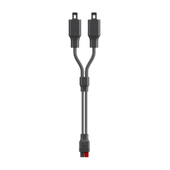














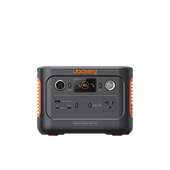

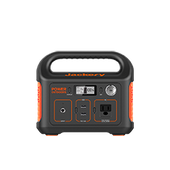
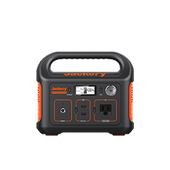












































Leave a comment